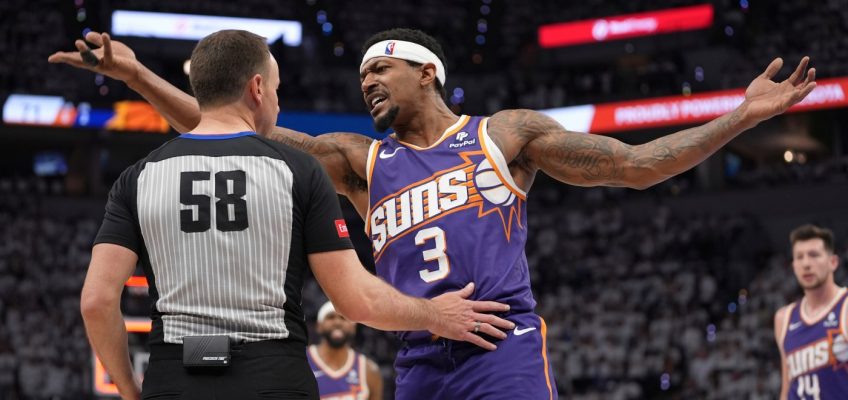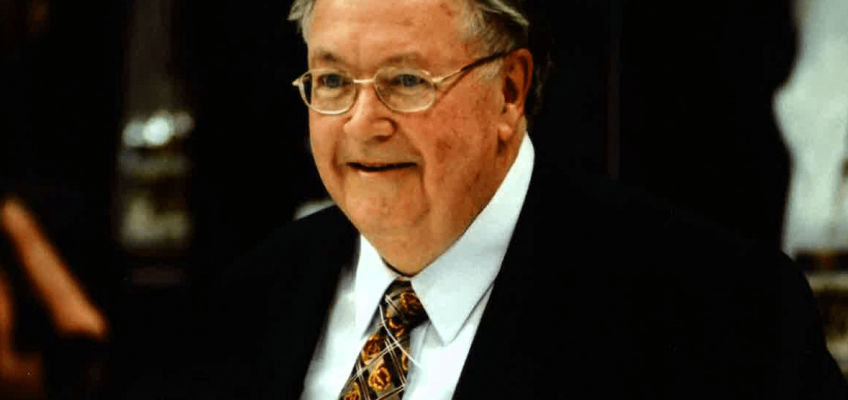After Minnesota shredded the Phoenix Suns in Game 2 of their first-round NBA playoff series on Tuesday, Suns players and coach Frank Vogel made comments that would sound alarms for any willing ear.
They were no surprise for anyone who had watched the game, because the Suns’ collective composure visibly unraveled in the second half. As the turnovers and missed defensive assignments piled up, players were bickering with officials and throwing their arms up in conspicuous exasperation.
“My frustration is just within the team. We need to execute,” Phoenix guard Devin Booker said. “We play well when we’re playing, and then we need to stick together once things turn bad. We’ve done that throughout the season. (It’s) something that has to be corrected.”
It feels a little late for that. As then-Timberwolves guard D’Angelo Russell said during the Timberwolves’ first-round series loss to Memphis in 2022: “We’re in the playoffs now. Nobody is going to change. You pretty much are who you are.”
The Timberwolves hold a 2-0 lead on the Suns in their best-of-seven series that resumes Friday night in Phoenix. Tip off is set for 9:30 p.m. Central Time.
Epiphanies generally aren’t made in the postseason; that’s what an 82-game regular season is for. The postseason tends to reveal who you are — which isn’t exactly a mystery to those who have followed your journey for the previous seven months leading up to this point. In the regular season, you establish an identity the team can lean on when times get tough in the playoffs.
For instance, it was no surprise when rebounding and late-game offense sank Minnesota against Memphis in 2022. A year ago, Minnesota was essentially a shape-shifter, changing identity depending on who was available on a nightly basis. The Wolves flexed that muscle against Denver as bodies continued to drop but ultimately were unable to do anything more than test the eventual NBA champion.
You can’t win a title if you don’t really know who you are as a team, and with a bevy of roster changes a year ago — highlighted by the major offseason acquisition of Rudy Gobert — it seemed to take Minnesota a full season to figure out which direction it would consistently lean.
The Wolves needed something to hang their hat on, and they knew it.
“When we sat down in training camp and said, ‘What team do we want to be?’ We said we wanted to be a defensive-minded team and be the best in the league,” Gobert said. “We can be unique, but it comes with a price. It comes with doing the dirty work, it comes with doing the things you don’t see on the stats sheet and doing it consistently. I really felt like from Day 1 of training camp, everyone really bought in to be that team.”
That’s never really wavered. Minnesota — which won 56 regular-season games this season, second-most in franchise history — was the No. 1 defense in the NBA by a comfortable margin. Now in the playoffs, that defense is winning the team games with relative ease. When the offense struggles, the defense keeps the ship afloat. It’s why Phoenix has never felt in control for any stretch of either of the first two games.
The Wolves are playing their game. They are who they want to be.
“We’ve been a defensive team all season,” Timberwolves coach Chris Finch said.
And Phoenix has been an inconsistent team all season, with a series of stops, starts and spurts of good play but no consistency. That’s been on full display over the past three weeks, with the Suns shelling Minnesota twice in the regular season only to look powerless in the first two matchups of this series.
When times get tough, as they are right now for the Suns, what can they rely upon? Devin Booker is the only member of Phoenix’s current rotation who was even on the team 15 months ago.
In many ways, Phoenix is in a similar spot Minnesota was this time a year ago, searching for solutions that aren’t quite yet apparent.
“We’re all trying to fight out there, and so far this series, once it has turned to (bad), we’ve kind of separated instead of being together, and that’s everybody — top to bottom,” Booker said. “We’ve got to figure it out.”
In the NBA, the playoffs are the test, and there is no cheat sheet allowed. By now, you either know the answers or you don’t.
Related Articles
Dane Mizutani: If Jaden McDaniels plays like that, the Timberwolves can’t be beat
Timberwolves force Phoenix into submission in Game 2 blowout to take 2-0 series lead
Timberwolves dispute between Taylor and Lore, Rodriguez over ownership moves to mediation
Suns not panicked after Game 1; Timberwolves know desperation and discipline must carry forward
Jace Frederick: By defending Kevin Durant, Karl-Anthony Towns sacrifices to benefit Timberwolves




